Tutorial- How to work Odd Count Tubular Peyote Stitch
This technique is used in my design Pass the Peyote, July 2018's design for Lola's Choice (Laura’s super fun small knitted kit club)! There is also a video tutorial for this technique... just scroll to the bottom of this post!
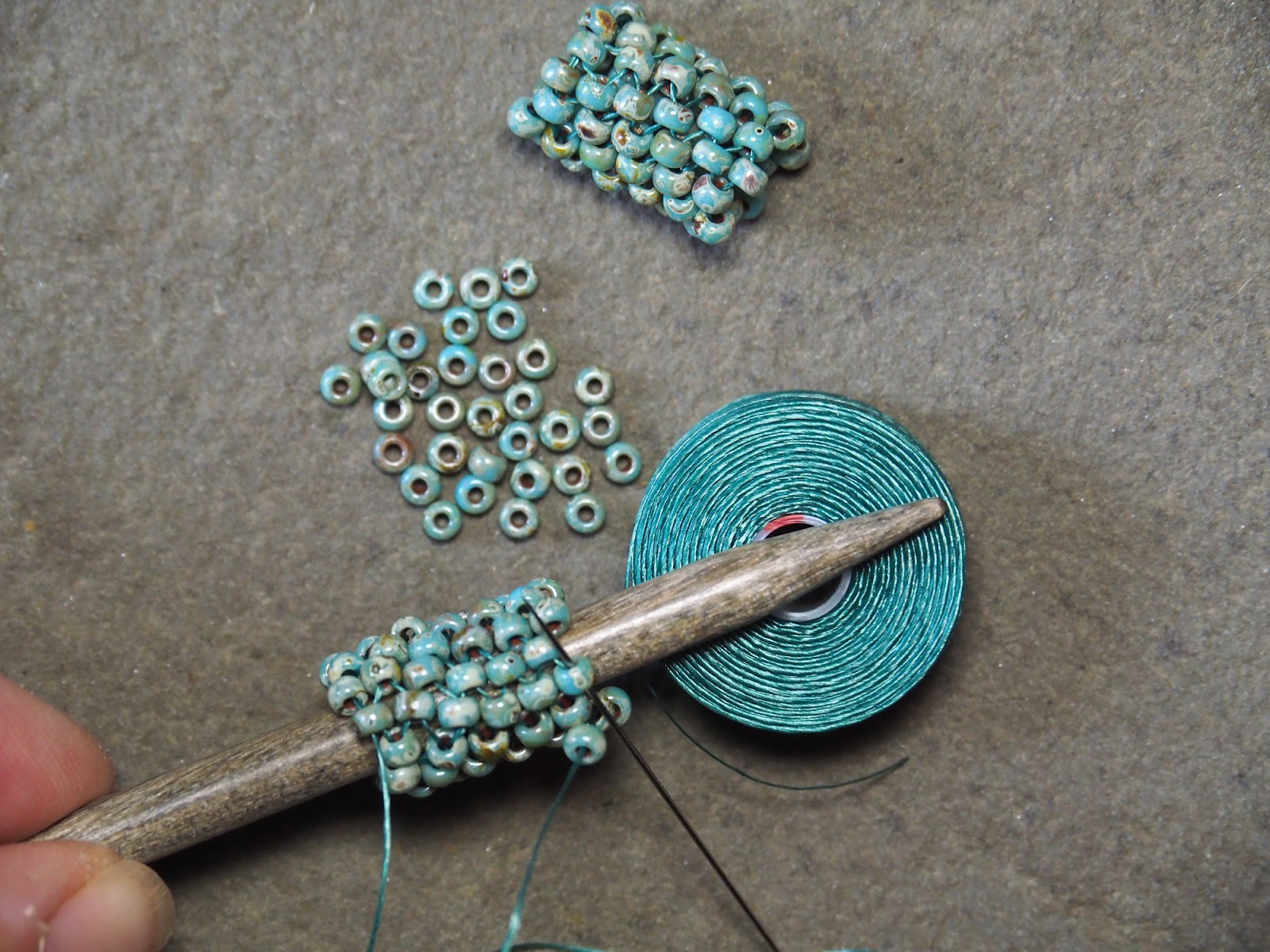
This tutorial demonstrates how to make Peyote Stitch cylinders that start with an odd-number of beads. Peyote stitch isn’t hard to do, the most awkward part is the first 2 rounds, but that is the same when you knit, so you all should be used to that!
Materials
Size D nylon beading thread
Size 8 Japanese glass seed beads
Size 10 beading needle
If you are working with larger (or smaller) beads you may need to adjust your thread and/or needle size.
Photo Tutorial (video tutorial at the end of the post and here)
1) Prepare your materials
Cut a length of nylon beading thread that is approx. 36 inches (91 cm) long.
Take this and thread it onto a beading needle.
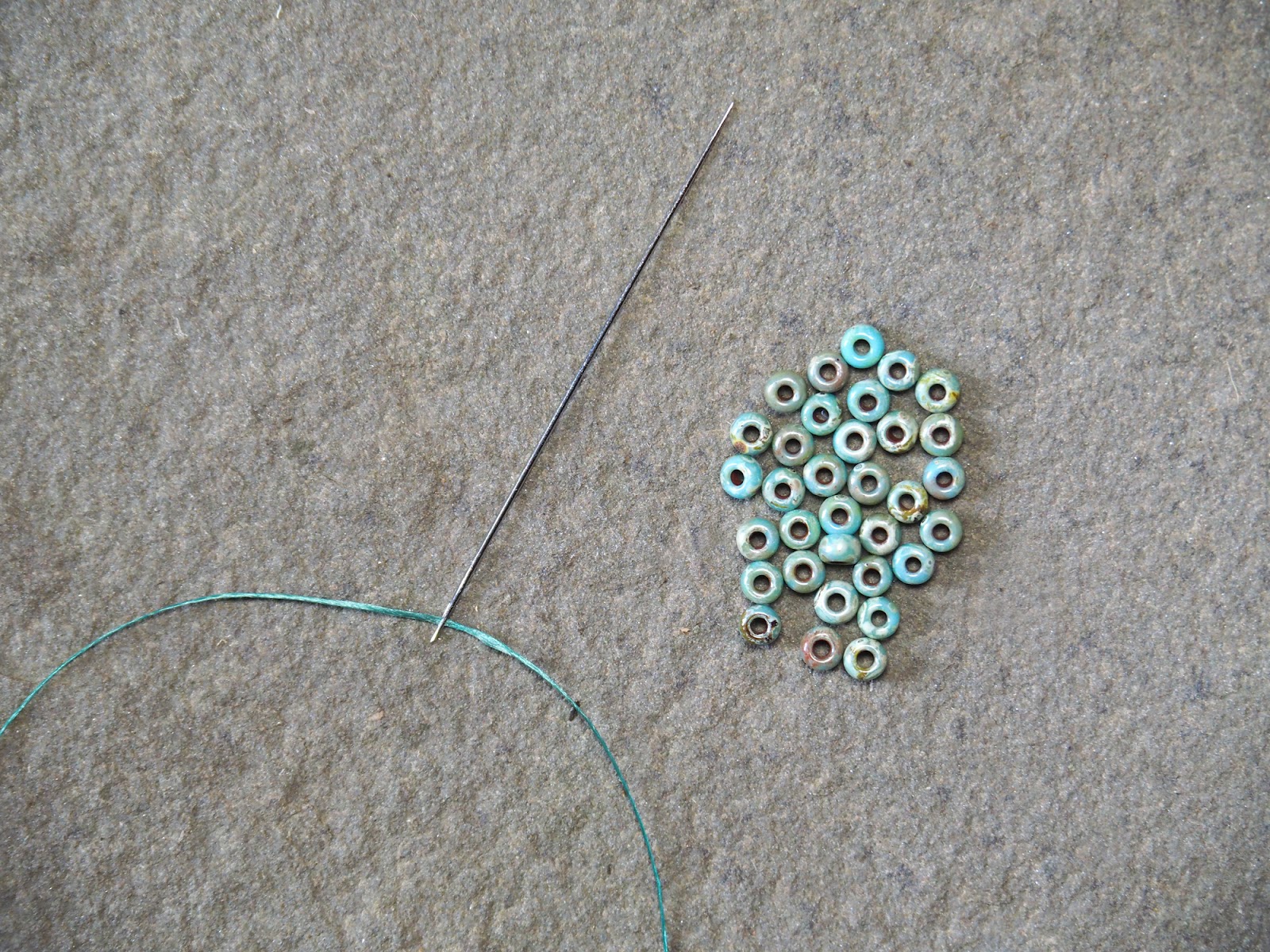
2) String 11 beads onto your thread.
You can also choose to do another odd number, but for this tutorial I am using 11 as that is the number I use in my bracelet design Pass the Peyote.
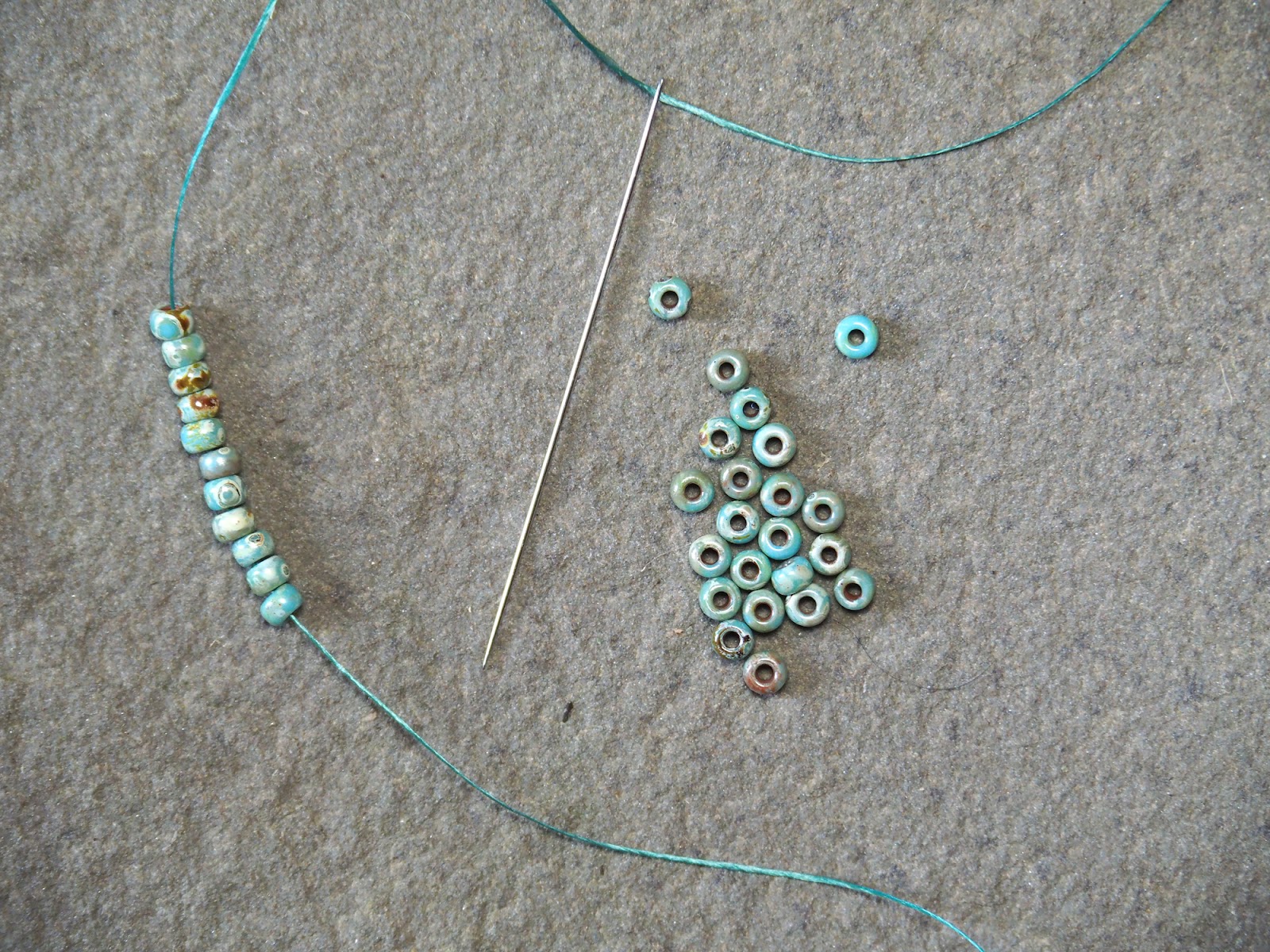
3) Create a Circle
Leaving an 8 inch tail, and starting with the first bead strung on, go back through all the beads on your thread.
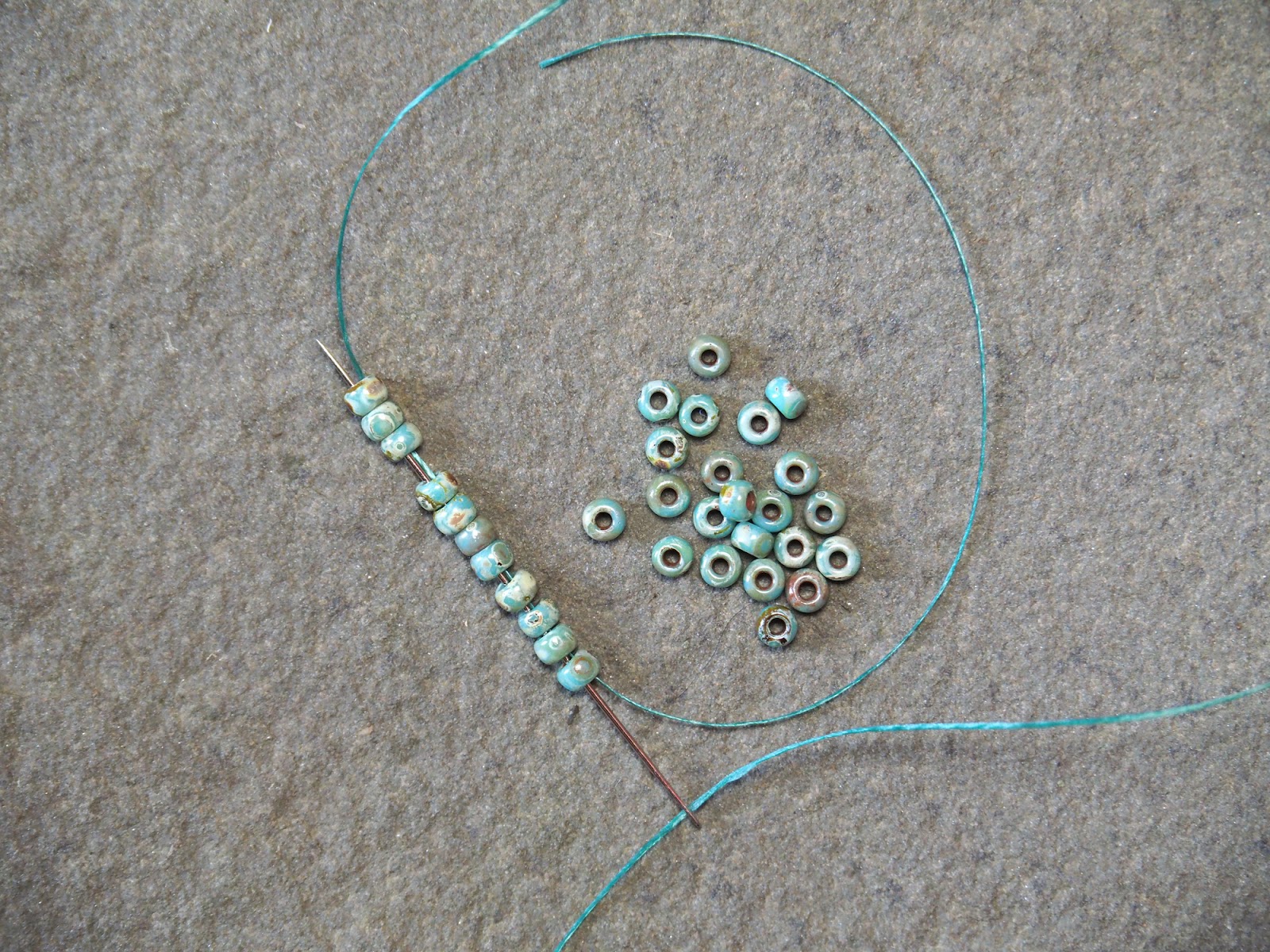 Then go through the first bead again.
Then go through the first bead again.
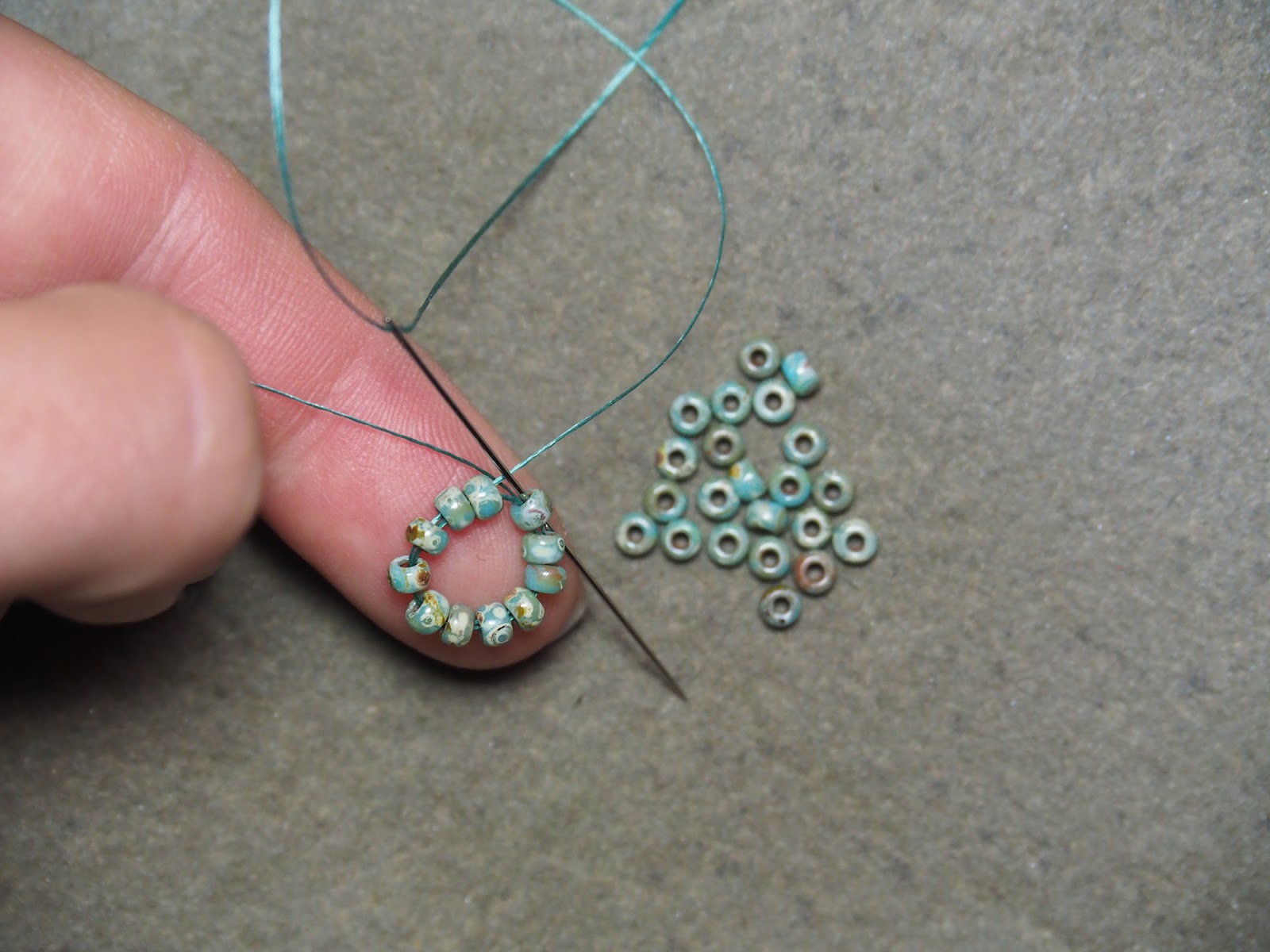 At this point you might find it helpful to put your cylinder onto the tip of a pencil or knitting needle, we found that a Size 9 [5.5mm] needle holds 11 beads perfectly (thanks Jan!). That will give you something to hold onto while you establish your cylinder.
At this point you might find it helpful to put your cylinder onto the tip of a pencil or knitting needle, we found that a Size 9 [5.5mm] needle holds 11 beads perfectly (thanks Jan!). That will give you something to hold onto while you establish your cylinder.
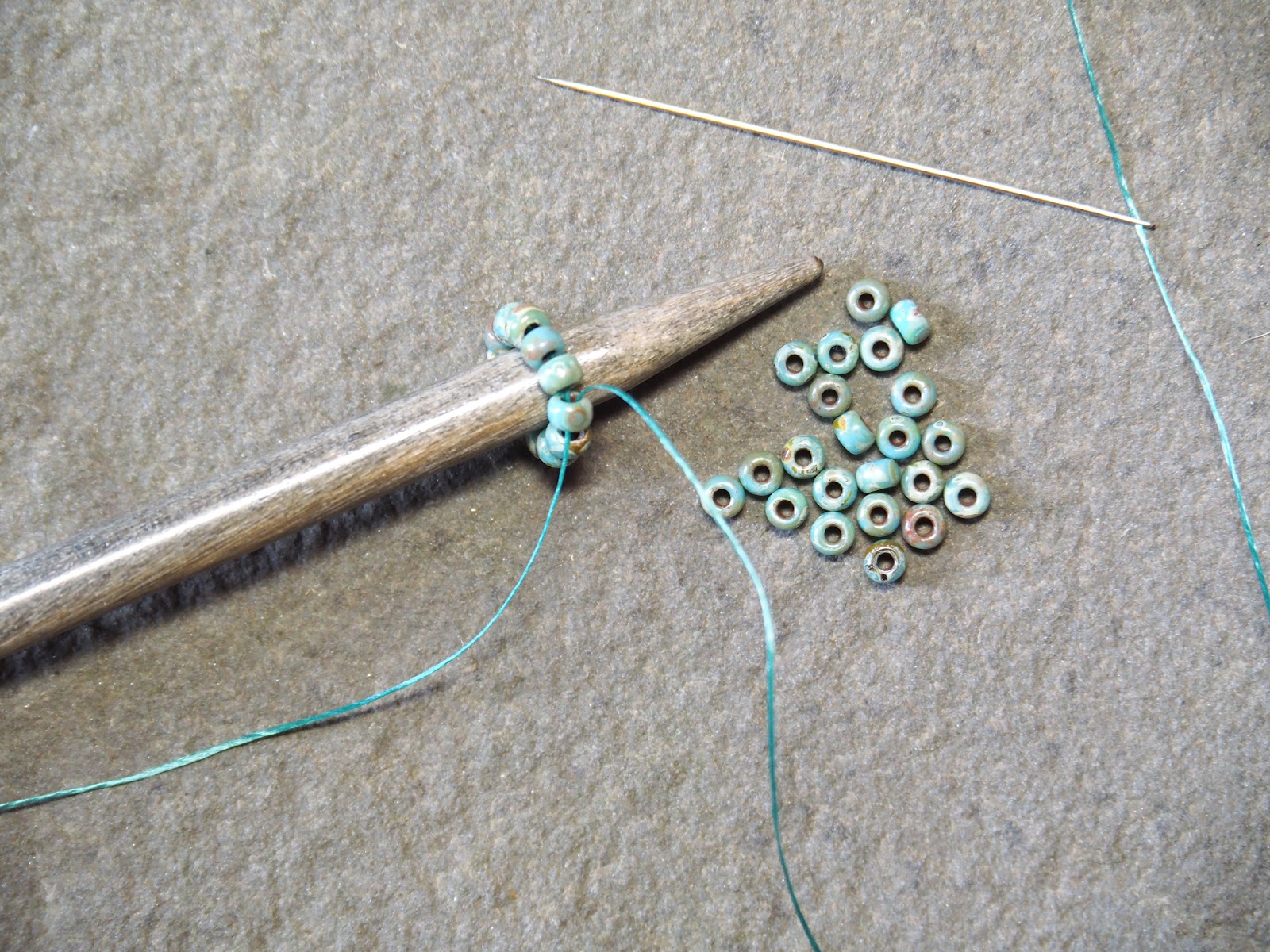
4) Begin Row 1 (uses 5 beads)
String 1 bead onto your thread, with beading needle skip a bead and go through the next bead in the circle.

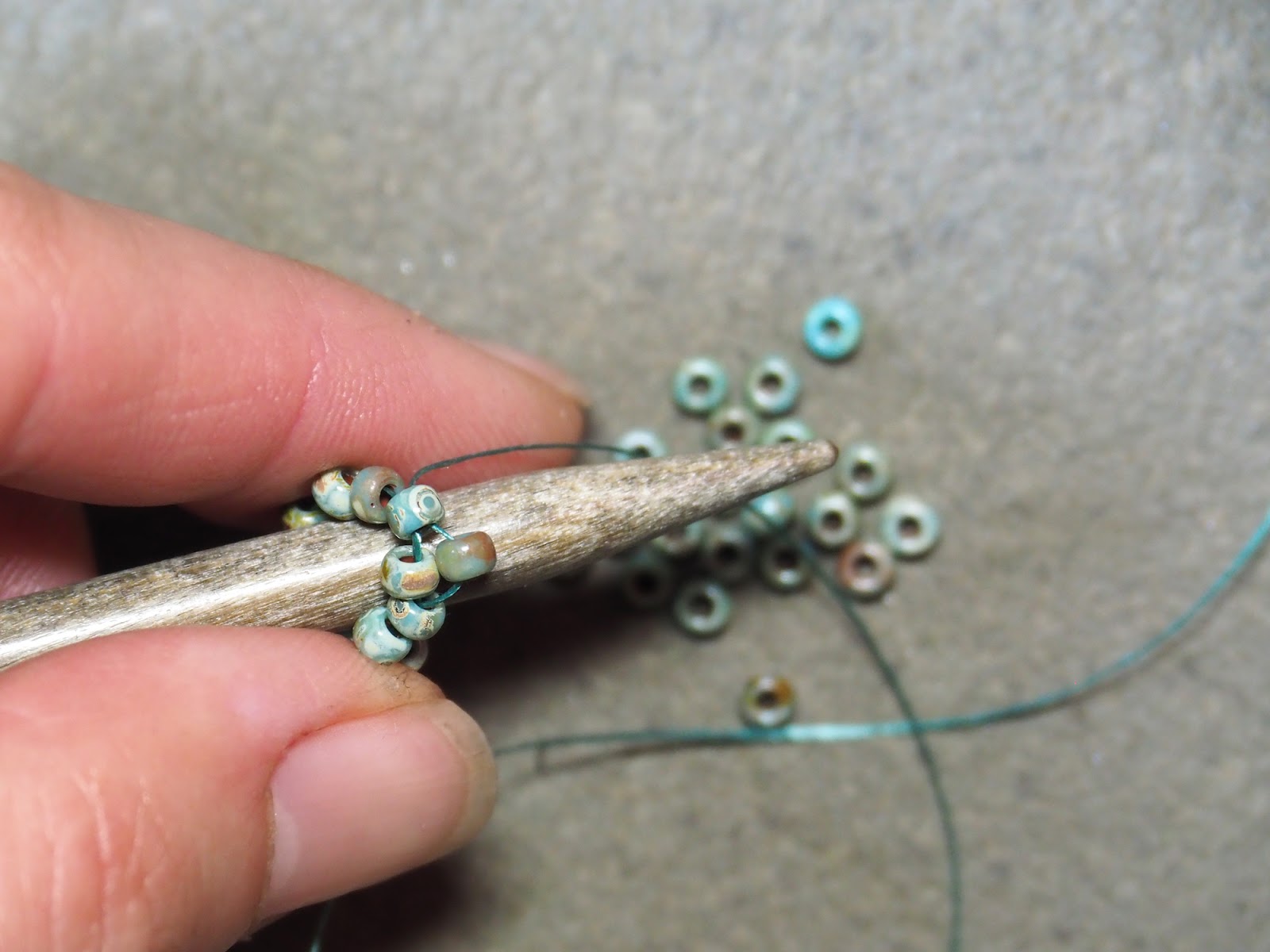 Repeat this four more times. You will now have your thread coming out of the 11th bead, the next bead will have the tail coming out of it.
Repeat this four more times. You will now have your thread coming out of the 11th bead, the next bead will have the tail coming out of it.
 Tips: I find it helps to hold the tail tightly against the needle as you work, you can even tape this down if you want. Also after everytime you string on a new bead pull the thread taught a bit, this keeps the beads in order. You can choose to work clockwise or counter clockwise, and have your needle horizontal or vertical, I find working counter clockwise with my needle held horizontally the easiest. You can work however is more comfortable for you! Just remember, things maybe a little loosey goosey. If so it is time to tighten up your work a little, this will shift the beads and help them sit on top of each other.
Tips: I find it helps to hold the tail tightly against the needle as you work, you can even tape this down if you want. Also after everytime you string on a new bead pull the thread taught a bit, this keeps the beads in order. You can choose to work clockwise or counter clockwise, and have your needle horizontal or vertical, I find working counter clockwise with my needle held horizontally the easiest. You can work however is more comfortable for you! Just remember, things maybe a little loosey goosey. If so it is time to tighten up your work a little, this will shift the beads and help them sit on top of each other.
5) Begin Row 2 (uses 6 beads)
String 1 bead onto your thread, with beading needle skip one bead and go through the following bead in the circle. This bead will be “popping” up a bit, it is the first one you placed on the previous row.
 Repeat this five more times. You will now have your thread coming out of the first bead. You can count your rows at this point by counting the beads stacking on each other and see that you have 2 complete rows worked.
Repeat this five more times. You will now have your thread coming out of the first bead. You can count your rows at this point by counting the beads stacking on each other and see that you have 2 complete rows worked.
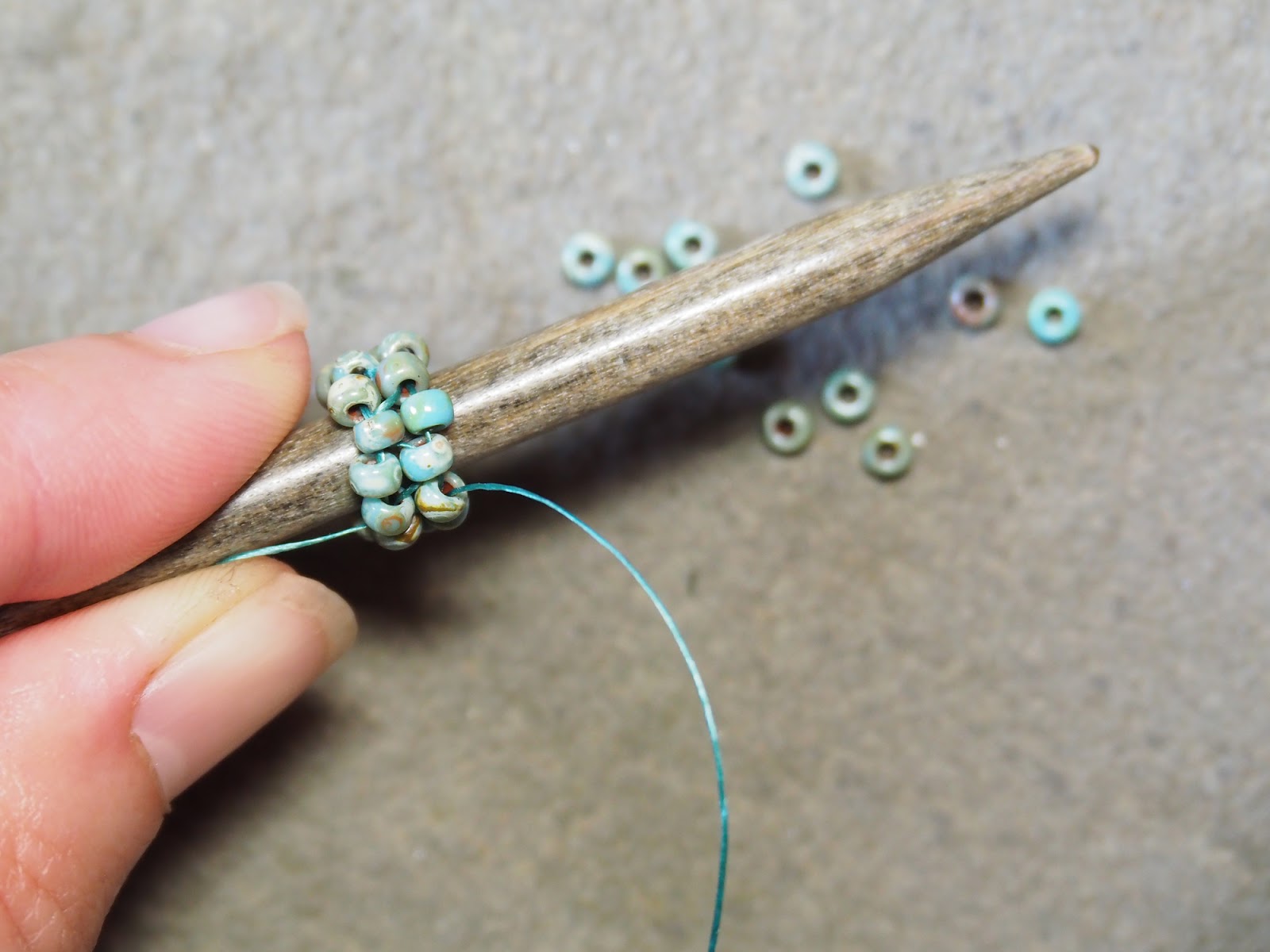
6) Repeat Rows 1 and 2
Now you’ll just repeat Rows 1 and 2 until your cylinder is the height that you want it. You’ll know when you have made it all the way around the cylinder when you are back at the tail. Count the beads you have in each “column”. You’ll know you have finished a Row 2 when you have the same number of beads in each column all the way around your cylinder.
 Pass the Peyote has 6 beads total in each column, and uses a total of 66 beads per cylinder.
Pass the Peyote has 6 beads total in each column, and uses a total of 66 beads per cylinder.
7) Finishing
Wasn’t that easy? Now just go back through each bead once more at the end of your cylinder.
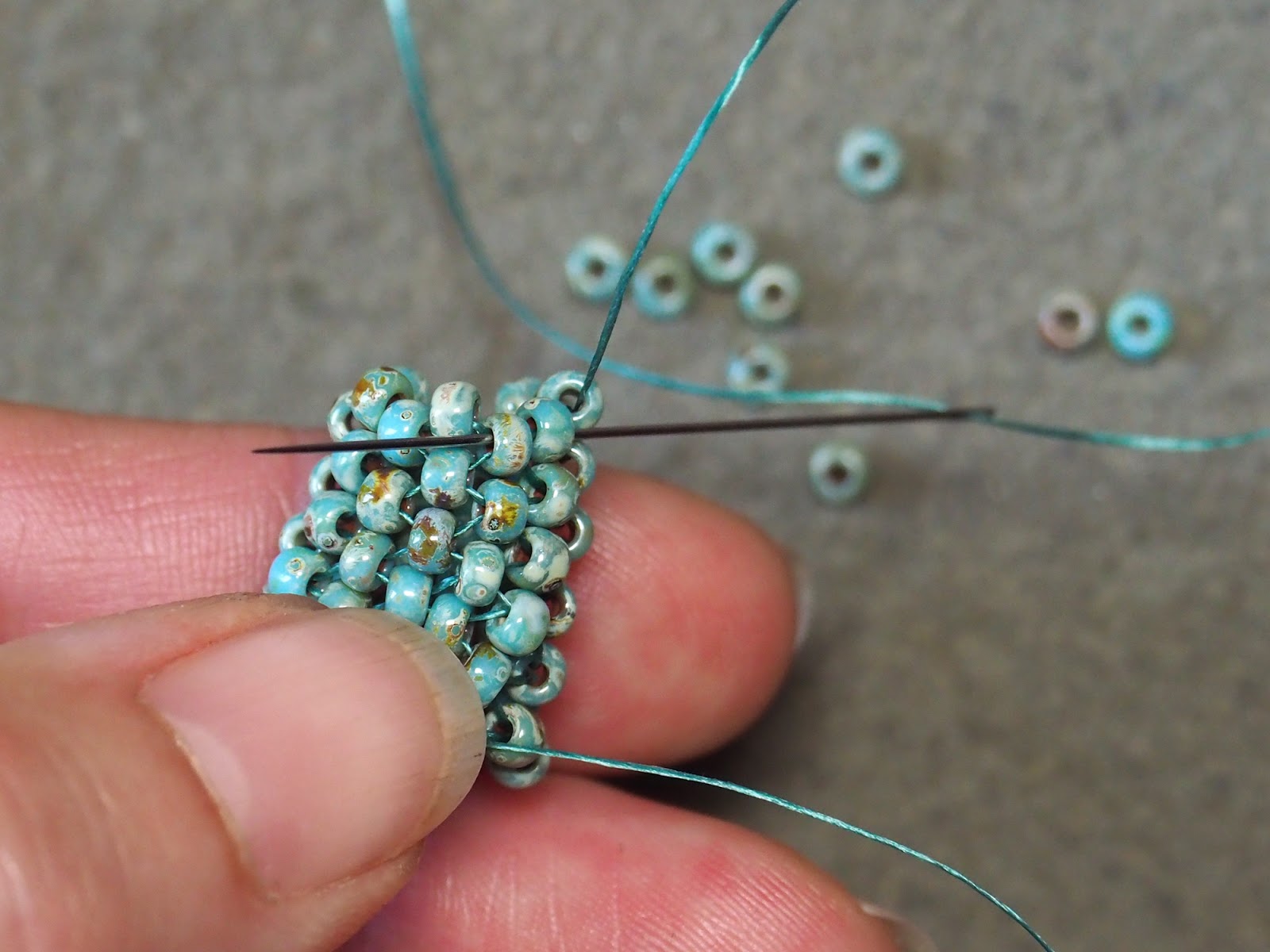
Then weave in your thread down through a few beads and poke your needle through to the inside of the cylinder and up through the center.
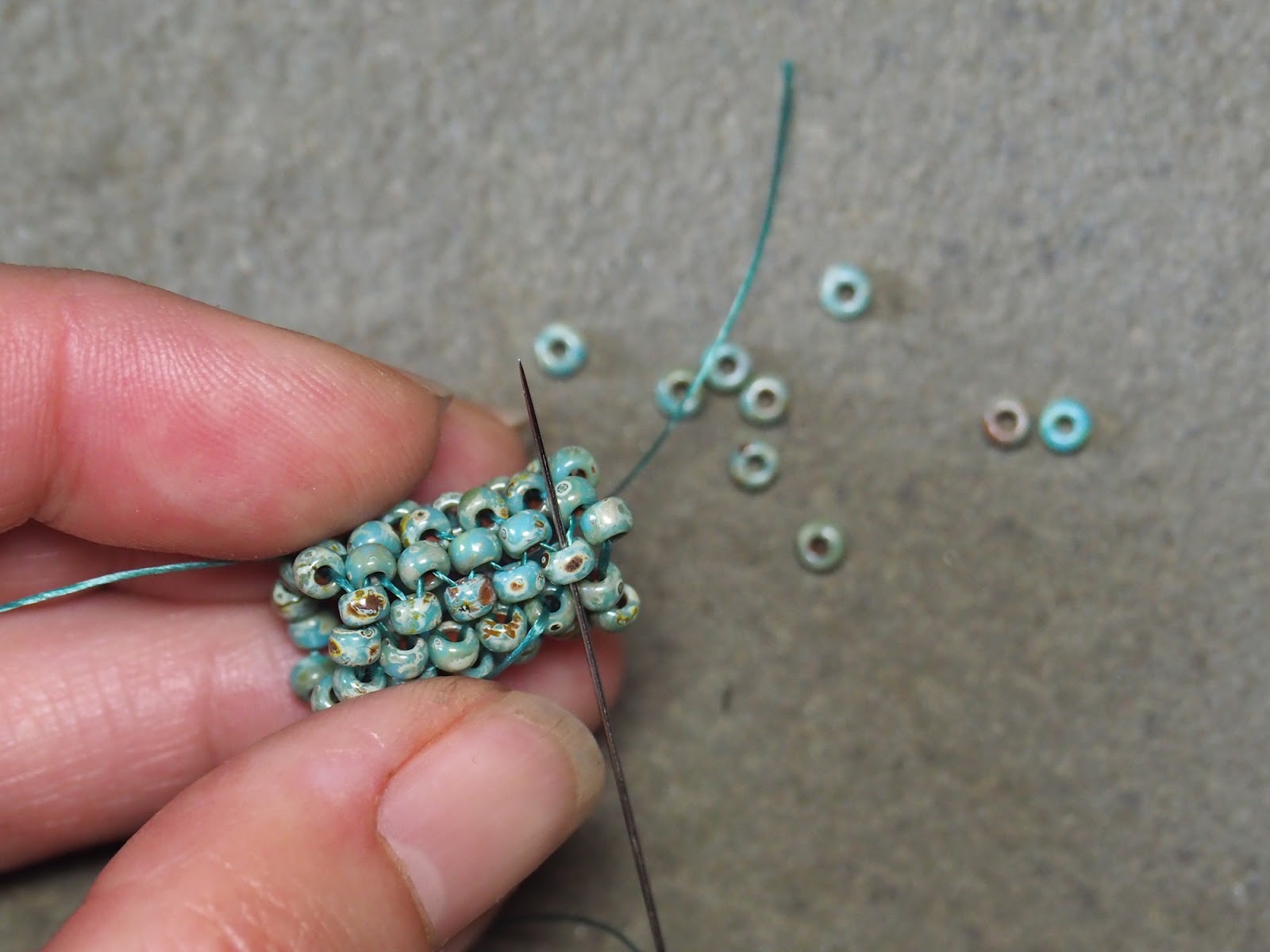
Cut your thread so it isn’t coming out the end. The more time you spend weaving in your end the more secure your bead will be! Repeat this with the tail from the beginning of your cylinder.
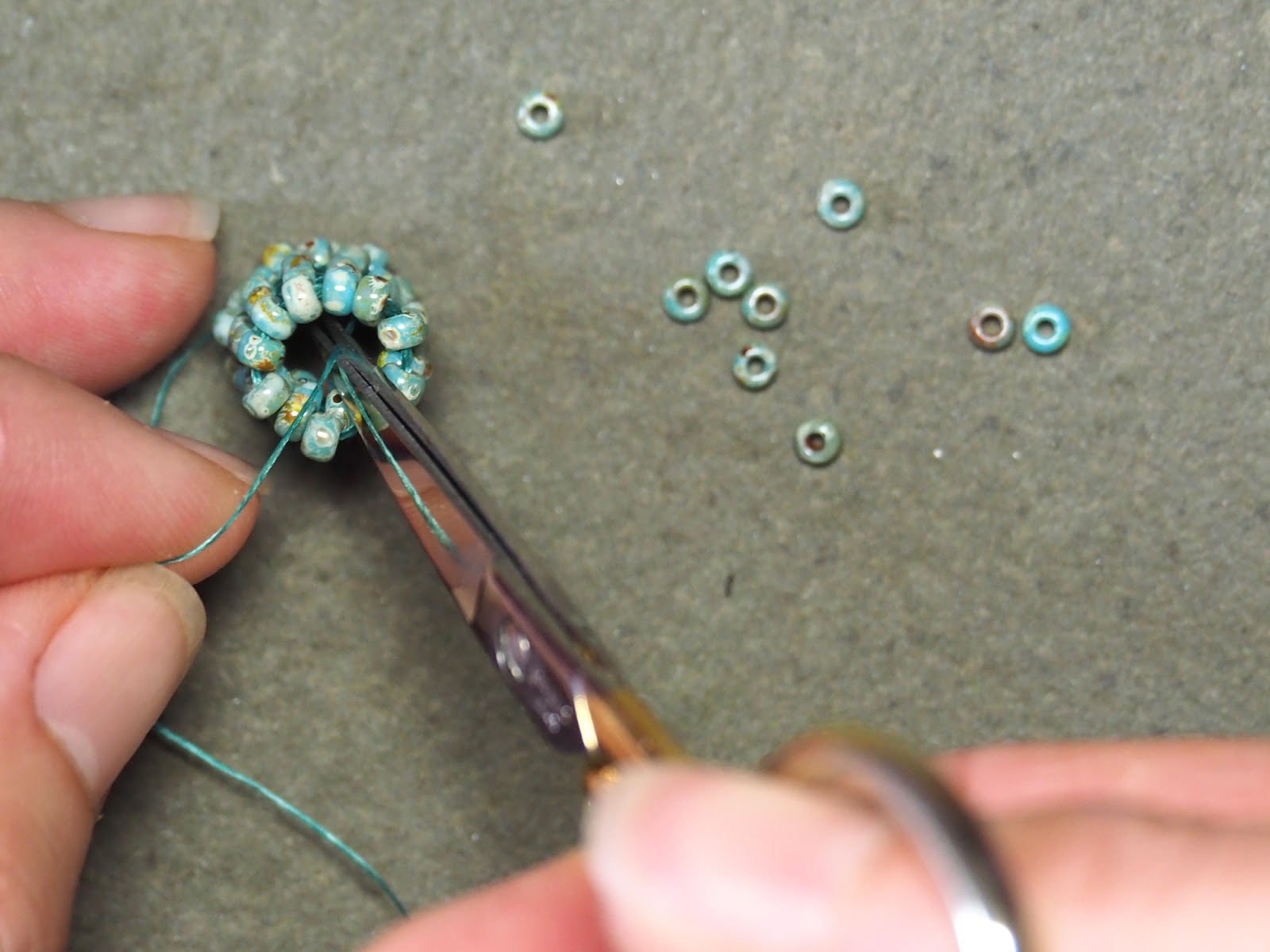
Video Tutorial
WAHOO! You did it! Way to learn odd-number tubular peyote stitch!
Check out Pass the Peyote, my cuff design that uses Peyote Stitch Beads!
Other resources for odd count tubular Peyote:
Video- Jill Wiseman
Photo Tutorial- The Spruce Crafts
This tutorial demonstrates how to make Peyote Stitch cylinders that start with an odd-number of beads. Peyote stitch isn’t hard to do, the most awkward part is the first 2 rounds, but that is the same when you knit, so you all should be used to that!
Materials
Size D nylon beading thread
Size 8 Japanese glass seed beads
Size 10 beading needle
If you are working with larger (or smaller) beads you may need to adjust your thread and/or needle size.
Photo Tutorial (video tutorial at the end of the post and here)
1) Prepare your materials
Cut a length of nylon beading thread that is approx. 36 inches (91 cm) long.
Take this and thread it onto a beading needle.
2) String 11 beads onto your thread.
You can also choose to do another odd number, but for this tutorial I am using 11 as that is the number I use in my bracelet design Pass the Peyote.
3) Create a Circle
Leaving an 8 inch tail, and starting with the first bead strung on, go back through all the beads on your thread.
4) Begin Row 1 (uses 5 beads)
String 1 bead onto your thread, with beading needle skip a bead and go through the next bead in the circle.
5) Begin Row 2 (uses 6 beads)
String 1 bead onto your thread, with beading needle skip one bead and go through the following bead in the circle. This bead will be “popping” up a bit, it is the first one you placed on the previous row.
6) Repeat Rows 1 and 2
Now you’ll just repeat Rows 1 and 2 until your cylinder is the height that you want it. You’ll know when you have made it all the way around the cylinder when you are back at the tail. Count the beads you have in each “column”. You’ll know you have finished a Row 2 when you have the same number of beads in each column all the way around your cylinder.
7) Finishing
Wasn’t that easy? Now just go back through each bead once more at the end of your cylinder.
Then weave in your thread down through a few beads and poke your needle through to the inside of the cylinder and up through the center.
Cut your thread so it isn’t coming out the end. The more time you spend weaving in your end the more secure your bead will be! Repeat this with the tail from the beginning of your cylinder.
Video Tutorial
WAHOO! You did it! Way to learn odd-number tubular peyote stitch!
Check out Pass the Peyote, my cuff design that uses Peyote Stitch Beads!
Other resources for odd count tubular Peyote:
Video- Jill Wiseman
Photo Tutorial- The Spruce Crafts
Comments
Post a Comment